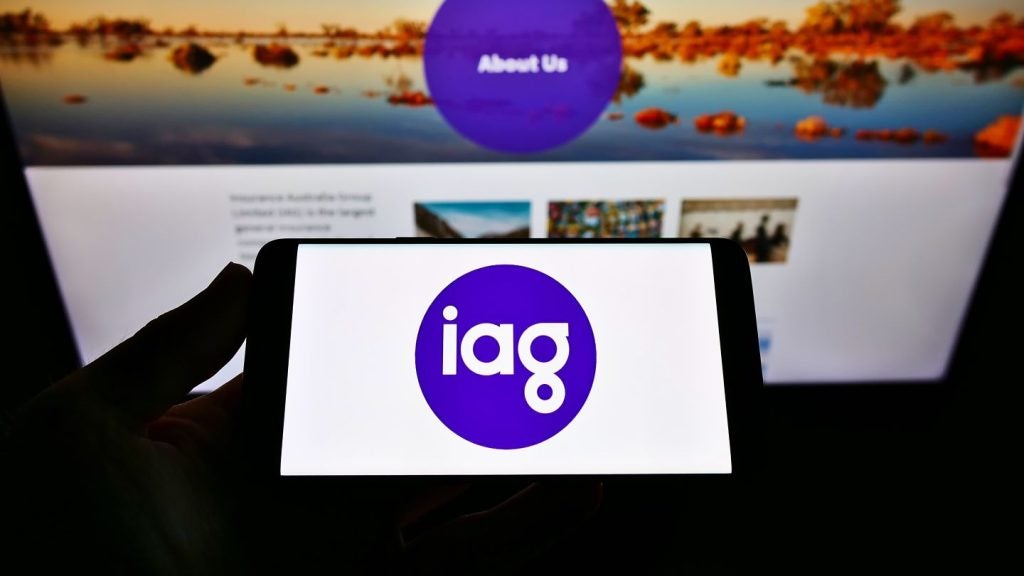billions of people who make up the world’s poor are increasingly
being recognised as a viable and profitable marketing opportunity.
Though major product and distribution innovation is required, many
insurers are proving themselves up to the challenge.
In his book The Fortune at the Bottom of the Pyramid, CK
Prahalad, professor of corporate strategy at the University of
Michigan, urged private enterprise to consider the potential market
that the four billion people in the world who earn less than $2 per
day represent. To gain access to this market he argued that private
enterprise will develop new systems and products uniquely suited to
the needs of the poor.

Access deeper industry intelligence
Experience unmatched clarity with a single platform that combines unique data, AI, and human expertise.
Many life insurers are proving Prahalad’s viewpoint correct as they
launch new innovative microinsurance products in Asia, Africa,
Latin America and Eastern Europe. Indeed, the concept of insurance
for the poor is not new. In a major study of the microinsurance
market, A Microinsurance Compendium, the publication’s editor,
Craig Churchill, explained: “When insurance first became widespread
in the late 19th century, it was seen as a poor man’s financial
service. The wealthy did not need insurance because they could
essentially self-insure. Somewhere along the way, as insurance
became more sophisticated and the wealthy recognised their
vulnerabilities, the perceptions reversed.” A Microinsurance
Compendium was co-sponsored by UN body the International Labour
Organisation and reinsurer Munich Re via its Munich Re
Foundation.
Churchill did not play down the challenges involved in entering the
microinsurance market. Among these he pointed out difficulties
posed in controlling risks such as adverse selection and fraud in
the low-income market. “For example, the claims documentation
methods and verification techniques used to ensure that someone
with a $100,000 life policy is not defrauding the insurer are
inappropriate for a $500 policy,” wrote Churchill.
Another major challenge in extending insurance to the poor is
overcoming their bias against insurance, stressed Churchill. “Many
are sceptical about paying premiums for an intangible product with
future benefits that may never be claimed – and they are often not
too trusting of insurance companies. Creating awareness about the
value of insurance is time-consuming and costly,” he wrote.
Underscoring the need for education were findings of a financial
awareness survey conducted by non-profit body FinMark Trust in
South Africa in 2007. Among low income groups, those who do not
have life insurance in any form gave the primary reasons as “don’t
need it” and “don’t want it.” This suggests that though insurance
products were considered by those surveyed, the products were
perceived to have no value, noted FinMark Trust.

US Tariffs are shifting - will you react or anticipate?
Don’t let policy changes catch you off guard. Stay proactive with real-time data and expert analysis.
By GlobalDataHowever, while Churchill stressed that the obstacles faced by
insurers entering the microinsurance market are “significant and
daunting”, the low-income market “has massive potential”. There are
already a number of formal and informal insurers around the world
that are developing efficient and effective new techniques to reach
a vast underserved market, he added.
Know the customer
One of the key steps to be taken by an insurer intending to embark
on a microinsurance venture is to first understand the needs of
targeted consumers, stressed Monique Cohen and Jennefer Sebstad,
two other contributors to the A Microinsurance Compendium study. In
certain initial forays by insurance companies into the low-income
insurance market, limited attention was given to the match between
products and consumer preferences and their focus was on
downscaling existing formal insurance products, explained Cohen and
Sebstad. The result, they added, was the supply of products not
always well suited to the market. With this came poor persistence
and low renewal rates.
For life insurers in the Indian market, microinsurance, despite its
challenges, is not an option. In 2002 India’s national regulator
the Insurance Regulatory and Development Authority (IRDA) mandated
that life and general insurers must generate minimum levels of new
business in rural areas. Currently, life insurers are mandated to
sell 7 percent, 9 percent, 12 per cent, 14 percent and 16 percent
of their policies by number in rural areas in the first, second,
third, fourth and fifth financial years, respectively. The IRDA
defines micro-life insurance as cover of between INR5,000 ($125)
and INR50,000.
Life insurers must also provide cover for a proportion of the
population falling under the “social sector,” defined as sections
of the population, such as agricultural labourers, road
construction workers, fishermen, artisans and physically challenged
self-employed individuals. Insurers must cover a minimum of 5,000
such lives in the first year of operation, increasing to 20,000
lives in the fifth year.
Needs are localised
Indicative of the challenges faced by insurers, consultancy Watson
Wyatt noted in a research paper that rural India encompasses about
700,000 villages across a wide variety of regions and consumer
groups. Underscoring this point, a study by the United Nations
Development Programme (UNDP) stressed that standardised product
designs do not meet client needs as these tend to be localised.
Other significant difficulties include small policy sizes,
obtaining acceptable proof of age and collecting and remitting
premiums promptly and accurately. Rural policyholders also often
experience difficulty with making premium payments on a regular
basis.
However, the opportunity India’s microinsurance market presents is
significant. The 2001 Census of India revealed that rural India is
home to 742 million (72 percent of the country’s total population)
and according to the Associated Chambers of Commerce and Industry
of India (ASSOCHAM), rural and semi-urban regions will together
generate $35 billion in total premiums by 2010. Of this total $20
billion will be from life insurance and $15 billion from non-life
insurance, predicted ASSOCHAM.
Not all Indian life insurers have adopted microinsurance with
enthusiasm, viewing it more as a cost of doing business than a
major marketing opportunity. However, this approach is changing and
a number of insurers are now pursuing successful and innovative
microinsurance projects. These are generally in partnership with
organisations with significant local expertise that act as an
intermediary between the insurer and insured. These include rural
banks, non-governmental organisations (NGO), community-based
organisations and, to a lesser extent, large consumer goods
marketing companies.
Laying claim to having launched India’s first true micro-life
insurance products is Tata AIG Life Insurance, a joint venture
between American International Group (AIG) and India’s largest
industrial group TATA. Launched in August 2006, microinsurance
products available to what Tata AIG terms “people at the bottom of
the pyramid” are:
• Ayushman Yojana, a single premium 10-year protection plan in
terms of which the policyholder gets back premiums paid plus 25
percent on survival to the end of the policy term;
• Navkalyan Yojana, a five-year insurance protection plan that
provides financial protection to the policyholder’s family and
provides an option to add an accidental death benefit rider;
• Sampoorn Bima Yojana, in terms of which a policyholder pays
premiums for 10 years and receives cover for 15 years and upon
survival until maturity receives 100 percent of the premiums paid
during the term of coverage.
Tata AIG’s distribution model is based on collaboration with NGOs
and local self-help groups that employ women advisors who provide
insurance advisory services to rural customers in their homes. Each
marketing group, termed community rural insurance groups by Tata
AIG, has a leader that the insurer has assisted in obtaining the
required IRDA insurance licence. Members of the group refer
policies for their own account, but the leader with the agent’s
licence submits the policies and receives an additional commission.
Training programmes, brochures, contract documents and application
forms are available in 10 languages.
AIG also lays claim have been the first major international insurer
to offer microinsurance. This was in Uganda in 1995, since when it
has expanded its microinsurance offerings to a number of countries,
including South Africa, Brazil, Honduras, Ecuador and
Guatemala.
India’s health insurance challenge
Another major challenge facing Indian insurers is provision of
health insurance. According to Watson Wyatt, 0.5 percent of India’s
population is covered by private health insurance and about 8
percent by government schemes. In total, healthcare costs are equal
to 5 percent of India’s GDP, 80 percent of which is private
out-of-pocket spend.
In a move aimed at addressing the private health insurance needs of
India’s poor, Indian insurer Bajaj Allianz has this year launched
the country’s first community-based health insurance scheme in
conjunction with humanitarian organisation CARE International (CI).
Bajaj Allianz is a joint venture between European insurer Allianz
and Indian industrial group Bajaj.
According to Allianz the new health insurance offerings are bespoke
rather than off-the-shelf products, as communities themselves have
been involved in designing the new policies. Commenting, CI’s
Indian representative, RN Mohanty, said: “The insurance packages
CARE and Allianz are offering people are the first of their kind.
By working with these communities so closely, we are sure we are
able to offer them the products they know they need.”
Policies cover death, medical treatment for injuries in accidents,
help with funeral costs and hospital expenses, and pay wages during
illness. Premiums are collected by communities themselves and
average about €7 ($11) per annum for a family of four.
Despite low premiums, Werner Zedelius, Allianz’s management board
member responsible for growth markets, said: “For us,
microinsurance is a growing social business. We expect it to be
profitable within the first year and plan to reinvest any profits
into the project to enlarge it further.” Initially focused on
southern India, CI and Allianz expect to have up to 200,000
customers aged 18 to 70 buying the health insurance products within
a year.
The health insurance venture is by no means Allianz’s first foray
into microinsurance. One of its more significant microinsurance
initiatives came in 2005 when Bajaj Allianz and CI teamed up to
provide micro-insurance products specifically for about 75,000
people living near the coast in the Indian state of Tamil Nadu. The
initiative was in response to a need for insurance following
devastation caused by a tsunami that struck the region in December
2004, leaving almost 10,000 people dead.
llianz is also active in Indonesia, where its unit PT Asuransi
Allianz Life Indonesia (AALI) launched an 18-month pilot project in
August 2006 offering a microinsurance credit life product dubbed
Payung Keluarga, meaning Family Umbrella. The pilot project proved
a success and in January 2008 AALI announced that it had added an
Islamic Shari’a law-compliant version to its Payung Keluarga
offering. “We are the first international insurer to offer a
microinsurance product that complies with Islamic law,” noted
AALI’s CEO, Jens Reisch.
“We are currently collaborating with seven partners, but are
confident that with our improved product offering we will be able
to expand this network considerably,” continued Reisch. “Of some
56,000 micro [lending] banks in Indonesia, around 600 are large and
modern enough to be viable partners.” In addition, with large
commercial banks now entering the microfinance sector, “there is
significant potential”, he added. Most microinsurance customers are
women with their own small businesses, while annual premiums are
about $8.
AALI currently has about 42,000 micro-policyholders and aims to
sell a total of 100,000 microinsurance policies by the end of 2008,
rising to 300,000 policies by 2010. “Our initial experiences have
encouraged us greatly,” said Reisch. “We have been able to build up
a sustainable customer base and are in the black. Of course, our
premium volume is low, but this is the nature of microinsurance.”
According to the US Central Intelligence Agency (CIA), 86 percent
of Indonesia’s total population of 235 million is Muslim.
“Indonesia still struggles with poverty,” noted the CIA.
Looking to China
Undoubtedly the next major microinsurance market is China, where
progress towards providing insurance to the country’s 800 million
rural residents, many of whom have been left behind by the
country’s booming economy, is in its infancy. Indicatively, a
recent study by development agency the World Bank suggests that
there are still 300 million poor in China.
owever, with encouragement from the China Insurance Regulatory
Commission (CIRC) microinsurance is on the move. Early initiatives
include those of China’s largest insurer, China Life, which offer
farmers life cover at an annual premium of about $14. According to
the CIRC, 1.2 million farmers were covered in 2007. According to
reports in China’s media the potential microinsurance market is
estimated to be between 200 million and 400 million people.
Another initiative aimed at driving microinsurance in China is a
research project launched in April this year by Swiss insurer
Zurich Financial Services (ZFS) in association with Nan Kai
University’s Department of Risk Management and Insurance. Clearly
indicating its intention to move into China’s microinsurance
market, the insurer said in a statement: “The findings of the
research project will enable Zurich to implement a systematic
approach to address the needs of low-income customers in
China.”







